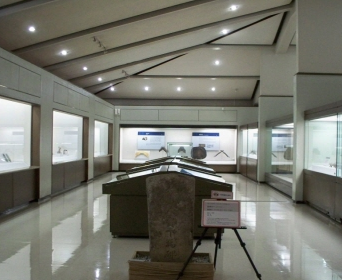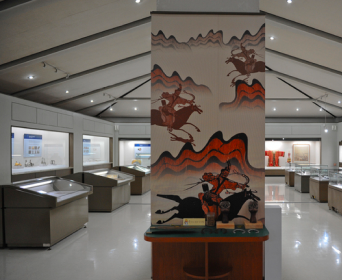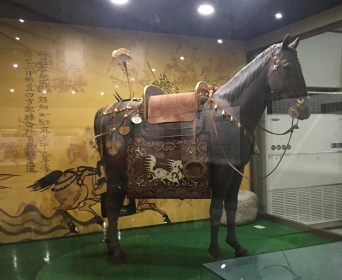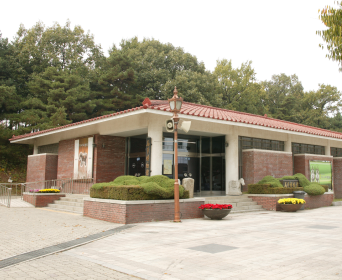Horse Culture of Korea
Go to main Corporate Horse Culture of Korea
The use of horses by humans can be traced back to the remote ages, farther back than we imagine. Some horse pens have been found in the Neolithic dwelling remains in Middle Asia, and historic records show that horses were among the major trading items in the ancient countries. The same was true in Korea
It can also be said that the ancient countries gave much importance to horses. They held memorial services for horse ancestors in the royal courts, established horse registers to control the horse population, and translated, compiled, and distributed horse medical books imported from China. To promote better understanding of horses, let us look into the major uses of horses in the past. Horses were used by the armed forces in warfare on a national scale. This was why the government commandeered people along with their horses when a war broke out. It is very rare for an excellent steed not to appear at all in a story about a famous general.
Researches by scholars show that Przewalski’s Horse has existed as an endemic species in the peninsular since the Neolithic times. The horse was called “Gwahama(果下馬)” as its body was so small compared to most horses that it could stride under fruit trees. It became a major species. The domesticated horses were used in hunting for wild animals. This tradition has existed for a very long time in Korea, as can be seen in the mural paintings of hunting scenes in the Goguryeo Dynasty’s Muyongchong(Tomb), in which warriors on horses are shown taking aim at other animals, with their bows drawn back, and on the folding screens of Horyepdo(胡獵圖)(a painting of a barbarian hunting scene), which were popular until the end of the Joseon Dynasty period.
Evidences have also been found of warriors and aristocrats enjoying martial arts or having fun on horseback, of people watching masangjae(馬上才)(a rider’s performance ot acrobatic feats while on a galloping horse) and enjoying Korean-style polo, where riders split into teams hit a wooden ball with a stick called jangsi(杖匙) into their opponent’s goal. These historic facts, based on evidences discovered in the 1990s through historic researches from the related literature, were perseveringly restored.
Horses are important because of their utility as means of transportation and communication. First, horses played a major role in enabling ancient states to seize power from other peoples living in remote provinces as they were the fastest transport means then. As horses, however, a transfer point in the middle of a course was needed to enable the horse to negotiate the same distance in the shortest time possible. The Silla Dynasty launched a system of paving the government roads, and installed stations on major paths, where horses could be transferred. In the late period of the Joseon Dynasty, there was a horse station every 30 “ri”(12km). It is interesting that the lines connecting such stations are not much different from the current railway and road networks. Horses were also used in farming. Although it is not likely that the average farmers owned a horse as horses were as expensive as two or three slaves in the Joseon Dynasty, it is evident that horses were widely used in farming, along with cattle, as it was written in the agricultural books dating back to the Joseon Dynasty that horses pulled farming tools like the namtae(a traditional Korean farming tool for leveling or hardening the ground) to plow fields, and as instructions on how to make fertilizers from horse manure appear in such books. Besides, horses were used to deliver the crops and to turn the millstone when pounding the harvest.
In addition to the foregoing, the horsehair was used as a material for making woven headbands, skullcaps, caps for classical scholars, and the gat(a traditional Korean hat), and the horsehide was used for making various craft items, including musical instruments like the janggu(杖鼓)(a traditional Korean double-headed drum with a narrow waist). The horse bones were used in medicine, and the horsemeat and horse milk were supplied as foods. As horses gave all that they had to people, they had been designated as the best livestock and had been spoken of figuratively as “loyal retainers” in poems and paintings. Many old cultures related to horses have disappeared, but Korea’s time-honored and varied horse cultures remain and ceaselessly flow in the Koreans’ ethnic spirits. This is shown by the fact that horses still hold an important position in our works of art, such as our literature and paintings, as well as in our sports and recreational activities. Horses are expected to nestle down deeply in our lives again, thanks to the development of the horse industry in the 21st century, as they have been traditionally recognized by the Koreans as useful and divine animals.



